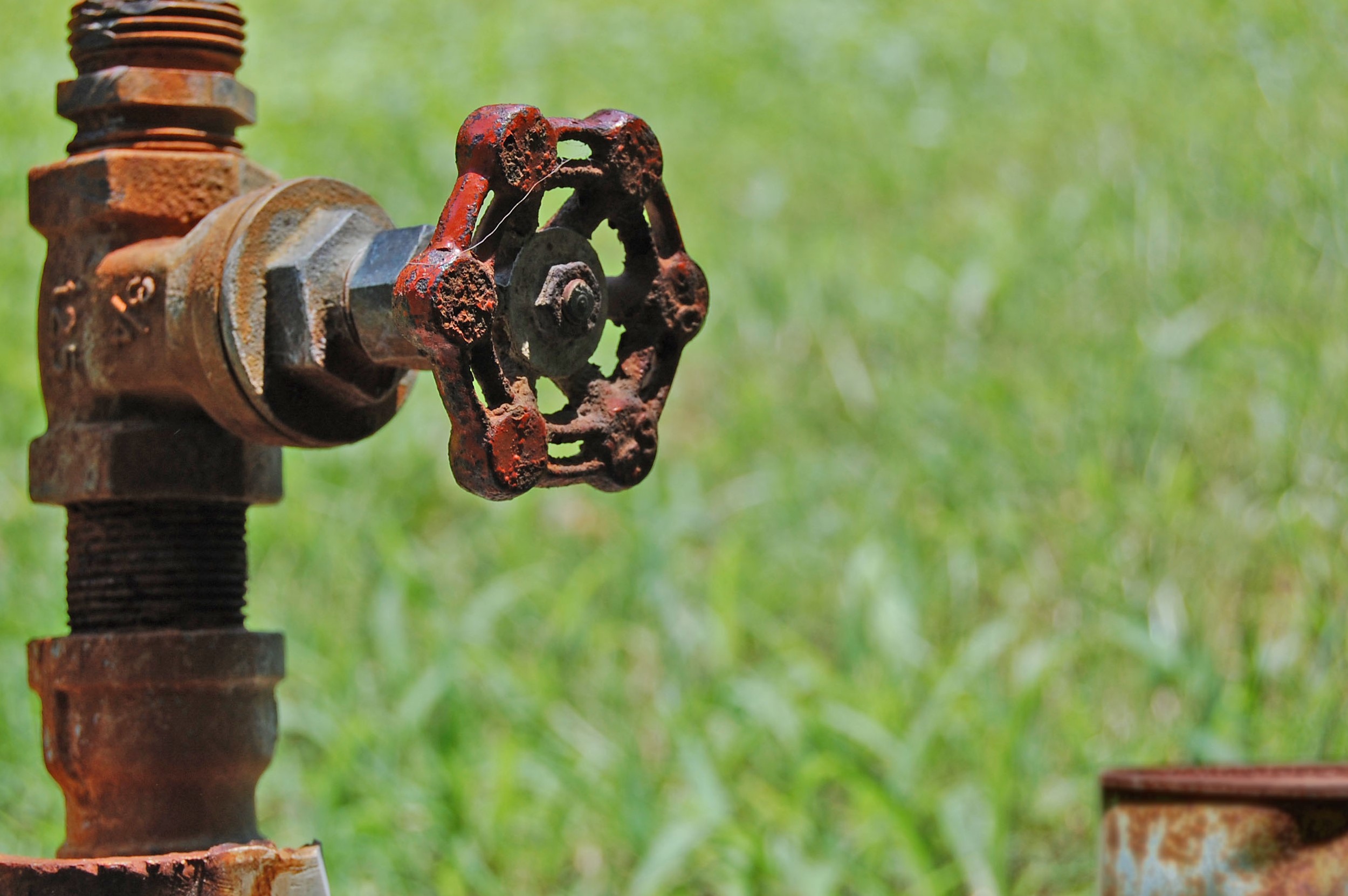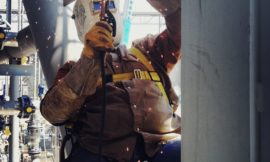Orphan wells are oil and gas wells that are no longer producing or economically viable but have not gone through the plugging process and usually don’t have an owner. They present potential safety and environmental concerns as well as an enormous cost to properly plug and abandon the hundreds of thousands of wells in the United States. In this episode, we discuss some possible solutions to the orphan wells problem and what surface owners can do if you have an orphan well on your property.
Be sure to also subscribe on Apple Podcasts via the link above and please leave us an honest rating and review. We read every one of them and sincerely appreciate any feedback you have. To ask us a question to be featured on an upcoming episode, please leave a comment below or send an email to feedback@mineralrightspodcast.com.
What is an Orphan Well?
While it might be confusing, orphan wells are different than abandoned wells. This is be cause the term “abandoned” usually refers to wells that are no longer producing and have been properly “plugged” by an operator. Hence the term “plugged and abandoned” or P&A’d.
Orphan wells on the other hand are wells that are no longer producing or economically viable but have NOT gone through the plugging process and usually don’t have an owner.
According to the Texas Railroad Commission (RRC), the body that regulates oil and natural gas development in that state, an orphan well is an inactive and unplugged well that has not produced oil or natural gas for a minimum of 12 months.
Who is Responsible for Orphan Wells?
Orphan wells are technically the responsibility of the original oil and gas operator. If the operator sold these wells to another company then the successor company may now be responsible for properly closing these non-producing wells. Unfortunately, many of the operators that were responsible for some of these wells either went bankrupt or for whatever reason are no longer around leaving the state holding the bag. Most states have bonding requirements that mandate that operators post a surety bond to cover the cost of plugging a well should the operator close up shop. Usually the bonding requirements aren’t enough to cover the cost of plugging all of the wells.
What are the Issues with Orphan Wells?
Besides being a burden on the landowner to deal with, orphan wells can pose issues like saltwater leaks or methane emissions through fittings on the wellhead that haven’t been properly maintained since that well stopped producing. Properly plugging and abandoning (P&A’ing) a well can cost tens of thousands of dollar or up to millions of dollars depending on the location, depth, and complexity of the job. This presents the biggest issue with orphan wells. That is, the financial burden that properly abandoning these wells presents.
What are Possible Solutions to the Orphan Wells Problem?
This is an area that presents both a challenge and an opportunity for the oil and gas industry. It will be challenging to properly plug the estimated 135,000 orphan wells in the United States. On the other hand, it presents an opportunity to demonstrate how the industry respects the environment and would generate a lot of good will.
This will help combat some of the pretty epic displays of what can go wrong with orphan wells, like the saltwater well blowout in Crane County Texas south of Odessa this past January of 2022. By being proactive around orphan wells, they will be putting their money where their mouth is as it relates to reducing emissions and protecting people and the environment.
Specifically, actions they could take would be to:
- Plug any existing wells before new wells are drilled nearby (as part of permit conditions).
- Partner with universities to find new more efficient ways to plug wells.
- Monetize the methane from these marginal wells to generate electricity to mine bitcoin or for other uses and set aside some of the generated funds to eventually plug & abandon these wells. Create an adopt an orphan well program, partially subsidized by the state but also put responsibility on the new “operator” to eventually plug the well.
- Form an industry coalition to tackle this program head on. Major operators in a basin could partner with the state to jointly fund and manage a program to plug known orphan wells over time.
- Companies could leverage carbon pricing to incentivize companies to adopt the highest methane emitting orphan wells.
Could Carbon Pricing Accelerate Plugging Orphan Wells?
Carbon pricing has been a voluntary way to finance emissions reductions around the globe. In other words, it is a market-based approach where companies pay to buy these carbon offset credits to claim that they are carbon neutral and the companies that are doing the work to reduce emissions can sell these credits.
At a high enough price, carbon offsets could provide the financial incentive for companies to proactively address this issue. Companies could use the revenue generated from the sale of these carbon credits to recoup the cost of plugging & abandoning wells that are emitting a significant amount of methane.
Carbon offset prices currently sit at around $3-5 per metric ton of CO2 but are likely to rise in the future if governments put teeth into their net zero targets.
Doing a back of the napkin calculation using the density of methane in lb/cu. ft. for 1 mcf of natural gas, if an orphan well emits 15 mcf per day of methane, this equates to roughly 189,435 lbs per year which is the equivalent of 2,148 metric tons of CO2 per year.
Assuming a carbon price of $5/metric ton of CO2, this would have a value of only $10,740 so would not cover the cost of plugging & abandoning a well at these levels.
Assuming that it costs around $50,000 to plug a typical orphan well, it means you would need at least a carbon price 5x where it is today (around $25/ton of CO2) or an orphan well that emits at least 75 mcf per day. Putting aside the reality that that much gas could be put to beneficial use or potentially sold at a profit, it it were released into the atmosphere, it would be equivalent to 10,740 metric tons of CO2. Again, assuming a carbon price of $5/metric ton that equals $53,700 which depending on the well might be feasible to cover the costs of plugging that wel.
For this thought experiment to work you either need a higher carbon price or a well that emits a lot of methane (which again a case could be made to use that gas for mining bitcoin or fixing the well & selling the gas anyway).
I’m a Landowner With an Orphan Well on my Property, What Are My Options?
It depends on the situation but it may or may not be a safety or environmental issue but a land use issue. When the surface use agreement was signed, there should have been provisions for reclaiming that land and removing the wellhead once the well was plugged.
If you’re a farmer or rancher that has to deal with this there are concerns like subsidence causing a hole that a cow or person could fall into or an area that you can’t put to use because an old wellhead is in the way.
Whatever the case, your options include contacting the current or former operator as well as the state oil and gas commission to make them aware of the situation. If the well is really old, there is a chance that it is undocumented in the state oil and gas commission database so making them aware of it will get the ball rolling.
Another option in some states is to potentially hire someone to plug the well for you and then seek reimbursement from the state for that work. Some states may offer partial reimbursement for completing this work but keep in mind you might be taking on additional liability if you go this route. In any case, this is a situation where you should contact your attorney if you have an orphan well on your property so that you can find out your options.
Resources Mentioned in This Episode
- What Are Orphan Wells | Texans for Natural Gas
- API supports carbon pricing, new technologies to address climate change risks | S&P Global Commodity Insights
- The Well Done Foundation
- Carbon offset prices set to increase tenfold by 2030 | Greenbiz
- Density of Methane, gas in 285 units and reference information
- Greenhouse Gases Equivalencies Calculator – Calculations and References | US EPA
Thanks for Listening!
To share your thoughts:
- Leave a comment or question below (we read each one and your question may be featured in a future episode)!
- Ask a question or leave us feedback via email or voicemail: (720) 580-2088.
To help out the show:
Click the Apple Podcasts Logo Above to leave us a rating & review. It really helps us reach those that need to hear this information and only takes a minute. We greatly appreciate it! Plus, you can get a shout out on a future episode!
Thanks again – until next time!




